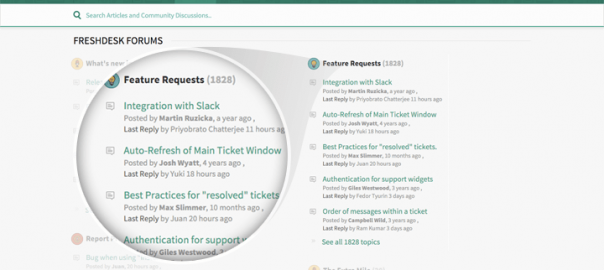User feedback is by far the most underrated method employed by businesses to improve their product’s user experience. Why a company would want to know what its user thinks about its product is same as to why the manager in a restaurant wants to know about the food.
It’s simple. The number of digits in your revenue figure is characterized by how better your user’s experience is while using your product.
But most SaaS companies despite being fully aware of this totally obvious thing, often miss out on taking user feedback, or give it the same amount of importance as much as Nicki Minaj gives importance to music in her music videos. I am reminded of the two cases wherein user feedback has decided the fate of millions of dollars.
Case A: Startup raised whopping $ 41 million before launch. Users didn’t like the product post launch. Shut in less than two years
A San Francisco-based startup going by the name of Color was able to secure $ 41 million dollars even before they had purchased the domain name, let alone before releasing the beta version of the product, which was an app.
With the money, they built one of the fanciest offices in the valley with skateboard rings and stuff, hired the team of developers whose salary was equivalent to the first round of any Bangalore based startup, and even managed to purchase the domain name- color.com and its English twin colour.com for $ 500,000. And before you could fit all these absurdities in your head, the company was already running advertisements on Saturday Night Live.
And they all did this without even once asking their target audience- “Hey folks, what they think about their product.”
Upon its release, only their employees turned out to be the active users of the app or perhaps just the QA guys.
Case B: E-commerce company listened to its users and changed a button on its form. Result: revenue jumped by $ 300 million
So the problem was that as soon as the user filled their cart and hit the checkout button, they used to encounter a form before they could make the payment. Now, the form was simple. It had ‘Email’ and ‘Password’ fields plus ‘login’ button for repeat visitors and ‘Register’ for the first timers.
The intention was to make the purchase faster for repeat visitors. But it turned out that both their new and repeat visitors hated the idea of registering or signing in. The company tweaked the form and realized that this form was the only hurdle between them and $ 300 million.
The answer to “what the heck did they do with the form” I am copying directly from the source.
The designers fixed the problem simply. They took away the Register button. In its place, they put a Continue button with a simple message: “You do not need to create an account to make purchases on our site. Simply click Continue to proceed to checkout. To make your future purchases even faster, you can create an account during checkout.”
Well, the above two examples were not meant for validating the importance of user feedback. We totally acknowledge how intrinsic feedback is for any product company or anybody per se. What I am stressing on here is that how easy is to ignore taking feedback and thereby land in 100 feet below deep shit.
Hacks and resources to take feedback the right way
In this post, I am going to highlight some of the hacks and resources to take feedback from your users. Check them out and share your thoughts in the comments if you disagree with any of them:
1. Coffee and Sandwich
Go to the nearest coffee parlor and make acquaintance with someone who mostly fits your description of the target audience. Buy him a coffee and sandwich and once the guards are down, politely request him to “take the brunt of checking out this new thing that you are blah blah blah.” Keep the screen recorder on and ask them to accomplish some of the tasks on the product.

Places like the coffee parlor, spa, parks are the ideal places to seek feedback because these are a few places where people are most relaxed, both mentally and physically, and in the state to give you their time and piece of mind.
Once they are done, get the answers to the questions that you deem fitting and critical to your product experience and analyze their behavior from screen record. Repeat the exact process on someone else and continue doing this as long as you eavesdrop people calling you creep.
2. Usability testing tools
Wondering what Usability testing means? Here Wikipedia answers it for you:
“Usability testing is a technique used in user-centered interaction design to evaluate a product by testing it on users. This can be seen as an irreplaceable usability practice since it gives direct input on how real users use the system.”
If you are pretending to understand it, you are not alone. Basically, user testing is a method to understand the usability of a product by making a real user use it and record their experience.
This is one of the best examples of usability test- rated 5 stars by a usability testing tool, usertesting.com.
And there is a lot of tools on the Internet which let you do it. Here is a blog that has listed most of them.
Essentially, it is an amplified and sophisticated version of ‘coffee and sandwich’ method and makes a lot of sense if you are launching a brand new product.
These tools can work excellently if you are in the beta stage or require your product to be tested by a user having a particular persona.
3. Heatmap tool
Heatmap tool is the excellent medium to figure out what exactly your users are doing on your website. It essentially creates a report like the one below:
Where they are clicking, how they are scrolling, which part of the page they are ignoring and which part are they loving the most. As in, which elements of the website are being clicked and which are the ones being ignored.
Heatmap gives you an incredible insight into the performance of your website and where it could be improved.
4. Regular product updates direct from the CEO
In 2013, Prime Minister of Norway had pulled out a stunt in which he disguised as a taxi driver and gave rides to the fellow citizen in a bid to know their real, non-sugarcoated feedback. Naturally, it became an instant hit with people across the globe, who started comparing him with their own leaders, who make their people disinfect their hands with sulfuric acid before they shake hand.
And there could be multiple such examples- Superdude Richard Branson serving guests in his airline and Flipkart’s founders doing delivery are a few of them. The point is, direct communication with the highest authority apart from increasing the trust quotient also encourages users to share their real feedback.
There is something that we used to do in the previous startup which I was part of. We, as a part of our communication strategy, regularly used to push email to clients, from the CEO, informing them about the new product updates relevant to them.
The mail used to an informal plain text message with the high level of personalization and totally devoid of any jargon or White Paper-ish language. To further personalize the email we had created an alternate email ID of CEO which we used to put in the ‘from’ section.
The mail used to have an incredible response rate from users who used to share thoughts on the update. The unique open rate used to go as high as 75-80% and the alternate email account where the responses were recorded used to be the power bank of valuable user feedback.
5. There is a subreddit group to validate your design
Visit this very popular subreddit group where you can get feedback from influencers and guys-who-know-stuff-about-design about your product design.
https://www.reddit.com/r/design_critiques/
This is technically free and apparently requires the least effort of all.
6. Get listed on review sites and directories
Jot down all the relevant portals and directories like Quora, Yelp, Google Business, Yahoo, every possible portal or website where you think your users have the option to review and rate you.

However, it is not that effective as the users mostly search these portals when they have the intention to bash you. To make it effective, encourage users with good experience share their feedback on these portals and make it part of your communication flow.
We had made “Share your review” mail as the part of the automated emails that used to be automatically pushed to client’s inbox after he enters the third month of using the product. Since the negative reviews are going to be spontaneous, the final aggregated list will be fairly balanced, which online users tend to trust more.
7. Create Feature request forums
Although, it’s important to acknowledge the feature request of every user, naturally the priority is going to depend on which feedback has the most requirement among your users.
Feature request forum creates a transparent setting wherein users would be able to post their requests, existing users would be able to know the product related concerns of other users. And, with the ability to like and comment, you would be able to know that which feature has the maximum requirement among your user base.
It is like building a community for your users. Again, this is something that we happen to create in my previous startup and results were overwhelming for the reasons that I have stated.
Freshdesk sets a benchmark for feature request forum and it also offers a product to create a forum that is equally good at the same time.
8. Exit Intent survey on the checkout page
When your user is present on the checkout page, we can at least assume, that the probability of your user making the purchase is same as the probability of Sarah Palin making a stupid comment.
As in, the probability of them purchasing is very high, but if they chose to leave, you would want to know “why”.

It’s very interesting to know what caused the trigger to leave at the last moment. Most of the reasons are going to be obvious ones like ‘I changed my mind’ or ‘I can’t find my card’ etc. which can be used as options. But, you could give them the option to write their problem which will give you terrific insight on the pain points of users.
9. Blog posts
More than a good practice, it is conventional for every business to have their own blog channel. If you don’t have one it yet, then you are a Mexican Wolf. As in, just like Mexican Wolf, guys like you are also very few except that nobody cares about you.
Search Google for the million reasons to create your own blog channel. Once you do it you would acknowledge it can also be one of the best mediums to get the feedback from your users.
You are releasing a new update, go type it all about it and post it with the heading like “So guys, what do you say?” Your users would share their feedback about the update through comments and direct emails.
Anything new that you do, you could treat your blog channel as a bulletin board and seek feedback from your users.
10. Feedback widget
Installing a feedback widget on the website is like creating a Facebook page of Donald Trump which will give everyone who comes across it the urge to post something.
The only difference is that in your case you would still have some probability of hearing something non-abusive.

The point is, the feedback widget creates an open window for your users, which triggers them to share anything they like. And it is totally harmless to install as it occupies a very limited area of your website’s real estate.
11. Talk
This method to know the feedback of users has been in use since the days when men used to sell fire and the user probably used to come complaining that the fire he bought died when he fed him water because he thought the fire is hot and must be thirsty.
Talk has no replacement and the best way to execute is by calling your user- through your phone, Skype, Hangout whatever you and your user deem fitting.
Like everyone else users also like to be heard and acknowledged and an intelligent company never leaves the discretion to suggest new developments with the product managers only.
The problem which we have is not knowing how to ask feedback and I hope that this blog comes useful while you are at it. Share your thoughts in the comments.
Find more awesome posts like this where this post was originally published: monk@webengage.com
Business & Finance Articles on Business 2 Community(122)
Report Post





